I do not know your starting point as a runner. But 42 km is a long distance to run and a huge physical and mental challenge for everyone who takes up the challenge regardless of whether they complete it in 2½ hours or 6 hours. In the 7 Steps Marathon Training Plan for Beginners, you will find that completing a marathon is a project that requires a lot of your willpower. It requires that you are prepared for all facets of the race.
So, to prepare you for a good experience on your probably first marathon run, I have made a step-by-step plan below which I can recommend you to follow.

The road to your marathon success
The 7-step plan below will ensure you remember and adhere to the essentials in relation to your marathon project and at the same time it gives you the certainty that you have a framework plan that has been tested and works in practice:
Physical preparation – training of the body
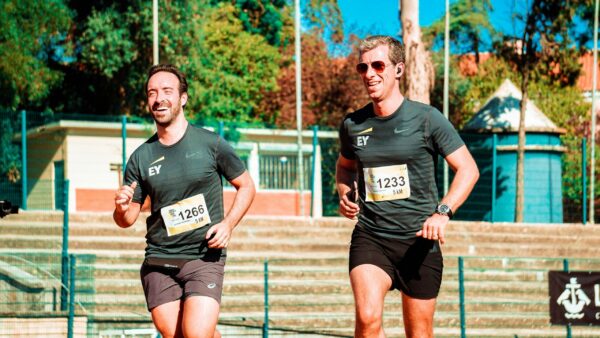
As beginner in your first marathon race, your goal should be to complete the marathon. Physical preparation is about what physical prerequisites you have now. Do you have e.g. experience from other sports, so you can start at a higher level or have you been inactive for several years, etc.
Your general physical level and the condition of your body have a big impact on how motivated you are to train for a marathon. Many physiological factors affect how physically ready you are, and those factors are something you largely can manage by yourself, so you can create the best conditions to start and complete your marathon project.
For you to change your physique into a well-trained endurance runner, 4 main categories should be focused on:
Cardiovascular system and lung function
Once you start getting in shape, your body will excrete carbon dioxide and waste products more efficiently and at the same time, it will also become better at absorbing nutrients. The result will enable you to run longer and faster without getting tired no matter what starting point you have.
As beginner, you will find that your lungs become more efficient at taking in air, so a greater amount of oxygen enters the body.
The amount of blood that circulates in your body increases and so does the number and size of red blood cells, which affects how much oxygen that will reach your heart and further around in the body.
When the oxygen-rich blood reaches your working muscles, the number and density of capillaries increase over time, enabling you to draw larger amounts of oxygen out of the blood. A well-trained runner has between 5 and 7 capillaries per. Muscle fiber, while the normal average is between 3 and 4.
Improved fuel utilization
The body uses carbohydrates fat and to a lesser extent protein as fuel for energy production. But its preferred and most effective “high octane” source is carbohydrates, which it stores in the muscles and liver as glycogen.
However, it can only store a limited amount, which corresponds to approx. 2 hours of training depending on training conditions.
But regular training increases the body’s ability to store glycogen. At the same time, the training increases the body’s ability to use fat as energy source by up to 30% and hereby saves on the valuable glycogen.
Improved muscle strength and endurance
Strong endurance muscles can contract for longer periods without getting tired, they are less prone to injury and they recover faster after physical activity.
After a few months of marathon training, everyday activities will feel much easier. Regular running training also increases the number of mitochondria in the muscle cells, which are the power stations where glycogen is converted into energy.
Stronger tendons, ligaments and bones
Stronger connective tissue and bones are better able to withstand the strain of repeated shocks from running and minimize the risk of fatigue fractures and joint injuries. Contrary to many people’s beliefs, running training provides healthier joints and reduces the risk of osteoarthritis.
If you train wisely, persistently and regularly, the adjustments of your body as described above will happen automatically, and you will be able to reach the starting line and the finish line without succumbing to injuries, boredom or burnout.
Mental preparation How motivated are you

Ask yourself questions like:
- Do I have the will to complete the marathon project?
- Will I get support from others e.g. my wife?
- Am I willing to take care of myself?
- Do I have any health restrictions?
- Am I mentally strong enough to make this physically possible?
The result you can achieve on the race day does not only depend on your physical shape. It is also very much about the mental shape. Finding your mental strength, focusing, going into yourself are some of the expressions we use to motivate us, to look deep into ourselves and discover our full potential.
Mental Barriers
For the marathon runner, the mental barriers are often the hardest to overcome. It will probably turn out early in your training program that a well-trained body will not get very far if it does not have a well-trained mind too.
There will be times in your training especially on cold rainy and windy days when you will stand and stare out the window and discover that you have a remarkable ability to come up with excuses.
When this happens, you should think about the wise words that marathon training is a mental discipline as well as a physical discipline.
Adhering to a training program can be a challenge for most of us. But the ability to stay focused and motivated throughout ex. a 6-month program is a huge challenge.
There will definitely be days when you just do not want to run. It is therefore important to remember that all athletes experience that motivation dive, you are not alone about that. Everyone gets tired and everyone has areas in their lives that can disrupt the training.
So how do you get through the difficult days and overcome the mental barriers, failing motivation and nagging doubts that most long distance runners are familiar with?
A really good and well-known method is…
Visualization is widely used in sports

Visualization is widely used in the world of sports. If you have seen a high jump competition such as a World Cup final on TV, you will often see that the high jumper before making his run to the crossbar stand and stares at it very focused while performing movements with the body and particularly the arms.
He simply stands and visualizes for himself how he will take on his run and the jump BEFORE he actually does it and he completely excludes the thousands of spectators on the stadium who are waiting for his next move as well as the millions of TV viewers who looking at him out in the world.
This is a good example of a visualization i.e. a mental exercise, where you with your brain go through in detail – and preferably with many details – the situation you want to strengthen your future experience of.
Visualization strengthens the connection of brain cells around a given activity, and it can be just as effective to imagine something as to do it.
Visualization to overcome marathon obstacles
By visualizing, you can become better at coping with crises during a marathon race. You can train yourself to greater concentration. In the world of sports, the term mental training is used as a synonym for visualization.
The term represents a spectrum that ranges from receiving a coach’s concrete instructions to the mental visualization you perform alone completely without a physical component or activity.
Some coaches have become famous because they have helped to change an athlete’s mental approach – to change the mindset.
The primary purpose of this little story is, that you can develop your own running mindset, so you can complete your marathon run in your best way. You must understand that what happens in your marathon training first happens in the mind.
Therefore, you must be aware of your thoughts, because they form the breeding ground for your performances and your performances form the breeding ground for your experiences, i.e. your interpretations of reality, of training, of running and your experiences.
Let’s assume you have the belief that it is not fun to run in rainy weather, then when you run in the rain you will probably get the experience that you are torturing yourself.
The good thing is that you can replace the belief that no longer supports you constructively and the new belief you choose to install instead, will be just as valid as the old one.
Mental training
So mental training is also about identifying, evaluating and changing beliefs. Any belief has probably served you well at some point in your life. But it is not certain that it will do it anymore.
If you haven’t run a marathon before, you may be convinced that you cannot complete the project. Your new belief must be that you can.
Maybe you think you are too fat and therefore not suitable as a runner? In this case, you need to start losing weight in your mind first.
You need to visualize that your body already looks the way you want it to and that the diet you eat supports the body you want. Thus, you will start to change your diet and probably eat both smaller and healthier.
Mental strength in a marathon
Becoming mentally strong simply just means that you can learn when, how and what to think or which images you need to imagine to achieve the desired emotional effect.
Being mentally strong means that you have acquired these skills in thinking, self-confidence and visualization that will allow you:
- To have instant access to reinforcing emotions,
- Being able to quickly switch from a negative emotional position to a positive,
- To be able to deal with mistakes and defeats emotionally,
- To bring oneself in the ideal state of performance whenever you want
- To be able to handle crises and adversity.
If you want to become mentally stronger, you have to train your brain and your mind in the same way that you want to train your body to become stronger.
Visualization of the daily training and of planning and participation in shorter runs are therefore essential elements in your mental preparation and for your focus as marathon runner. When it dawns on you what is possible, you will change your behavior.
When you realize how much good you can think and visualize, and how much evil you can think yourself away from, you will begin to make new decisions and thus create change.
Start With Smaller Running Distances
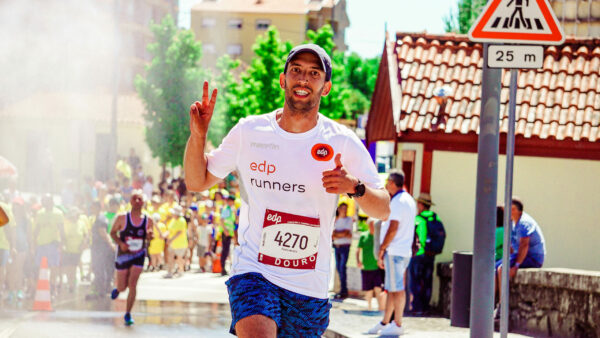
If this is the first time you are starting with running training or maybe you have running a long time ago, you should start slowly as the body needs to get used to and adapt to an actual running program that requires running training several times a week.
The tissue rebuilds and reinforces at different speeds, and this is very important particularly if you are beginner:
Muscles: After 2 to 3 weeks there can be measured an increased strength of muscle tissue.
Bones: After about 3 months, the bones have evolved to the same level as the muscles.
Tendons: After about 6 – 9 months, the tendons have evolved to the same level as the muscles.
As you see, the training can have consequences. While muscles easily can withstand and adapt to the training, bones and tendons need a longer time. This is the reason why many running injuries are tendon injuries.
Easy start-up as beginner
Therefore, it is important not to start up too hard as beginner, even though in the beginning you can be very motivated to get started and want to get in shape fast.
The slow soft start with shorter distances gives your body – and brain – time to get used to the new challenges and it gives you a much better and more enjoyable experience while you also avoid injuries.
You can choose to start with the program from How to train for a marathon and successfully complete and then proceed with the specialization from How To Use Marathon Training Schedule Beginner/Intermediate.
It will also be a good idea if you sign up for public races along the way at shorter distances and gradually increase them, so you experience the atmosphere, the good feeling and the race experience itself by completing a public race. In that way, you will prepare yourself for the “big goal” that a marathon race is.
Marathon Training Plan
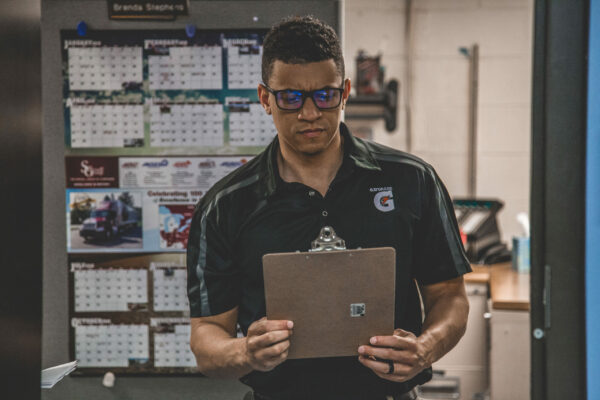
When planning a marathon, it can be seen as a practical example of visualization. You must actively imagine all the things that need to be in place for the marathon race so it can become a reality for you. The keywords here are:
- Prioritize
- Organize
- Optimize
You are probably facing your first marathon, it will in return be a milestone event in your life. The consciousness of having completed a marathon marks your personality as a “gold medal” which increases your self-esteem. A Marathon is the runner’s “apprenticeship test” since It’s “the mother of all running competitions”.
I have suggested training programs for you but if you choose another one, we have to ensure, that you do not follow a completely unrealistic training program, it may require that you clarify your current preconditions.
The best training solutions for a marathon are based on a goal-setting and capacity analysis, where you have to consider the circumstances of your:
- Physical capacity
- Mental capacity (discipline)
- Training background
- Injury history
- Current training pattern
- Age
We have been through most of it, so it’s just a reminder because it’s important. I’ll also highly recommend you to use the SMART Model to specify your marathon goal.
Marathon training plans – preparation
In addition to this, your planning should include everything from visiting the marathon race’s official website, ordering the race number, travel, transport and possibly hotel as well as important addresses and times, changing and luggage conditions and of course the race route itself.
Its course and nature as well as services such as directions, meals and toilet facilities. In addition to this, it will be a benefit to be aware of the weather conditions, so you can choose appropriate clothing and equipment.
The more vividly you can imagine all this, the greater is the probability that your race will proceed in a good way without unpleasant surprises.
In the week up to the race itself, imagine yourself taking the journey from your front door to the race area and taking into account all important factors. You can make a timeline of the process and plot all your actions in on it.
See for yourself how your actions on the timeline create the foundation for a great Marathon experience. The more actively you can visualize and plan, the better you will be to discover what you could have overlooked. thus, you will be at the forefront of the situation.
You are aware of what you need to do to ensure a good marathon run and a good experience that the investment was good commensurate with the return. You can find marathons worldwide here: MarathonGuide and worldsmarathons
Nutrition And Marathon Training

Imagine a Formula 1 driver is placed in the front row just before the start of a race. Maybe he is the best driver in the world with the best car. But if the car is running on poor quality fuel or if he forgot to fill up the tank completely, his performance will definitely suffer from it.
The same is true of human physiology – no matter how well-trained you are and how well-prepared you are, your run will not be as good as it could have been if your body is full of “bad fuel” or there is not enough of it.
The fuel your body needs to function normally during daily activities and training comes from the food and drink you consume. While the amount of energy you need is an important factor, the quality of your energy intake is crucial to achieving optimal performance.
Most runners know that carbohydrates are the key source of energy for runners. But that does not mean that fats and proteins are not essential nutrients.
Nor does it mean that all carbohydrate sources are equally good. You can read more about nutrition for runners here: Runners diet and nutrition up to the marathon race itself here: Outstanding diet on race day.
The Marathon Race
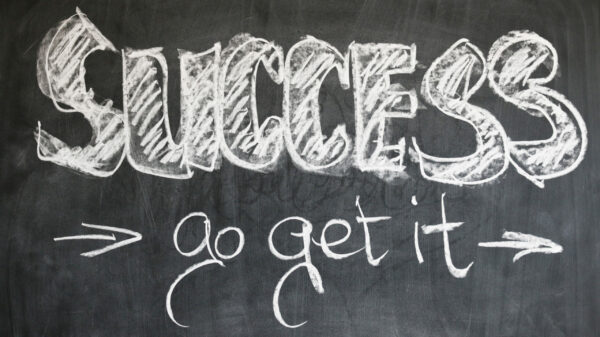
A few weeks before the marathon race, you should receive the latest instructions from the organizers with important information, such as where to place your bag, where to pick up your start number, how to get to the starting point and a map of the route.
But use the marathon race’s official website to get an overview and get answers to other important questions.
You should carefully read everything you have received of information from the organizers, there may be small details that you do not notice the first time, such as how to attach the chip to your shoe.
I usually get the laces in the shoe through the holes in the chip and then tie the shoe with a double knot. Also, find out if you want to run after a certain pace balloon runner with your expected km time.
If you wish, you can use the Schedule below as a “reminder list” for the race day. Remember it is only suggestions and you can add other things to the list – use it as you want.
| Clothing | √ | Personal | √ | Other | √ |
| Race shoes | Water/sports drink | Sports bag/backpack | |||
| Socks | Band-aids | Bum bag | |||
| Shorts | Sunglasses | Towel | |||
| Running Singlet | Zinc cream | Plastic bags | |||
| Underwear | Food powder | watch | |||
| Jogging Bra | Vaseline | Heart rate monitor | |||
| Cap | Toilet paper | Race confirmation material | |||
| Gloves | Selected foods | Earbuds and music | |||
| Tights | scissors | ||||
| Tracksuit | Shoelaces | ||||
| Jumper | Safety pins | ||||
| Warm-up
T-shirt |
|||||
| Cool down
T-shirt |
|||||
| Sweat Bands | |||||
| Race number | |||||
| Wet weather Running gear | |||||
| Super underwear | |||||
| “throw away clothes” |
Running The Race
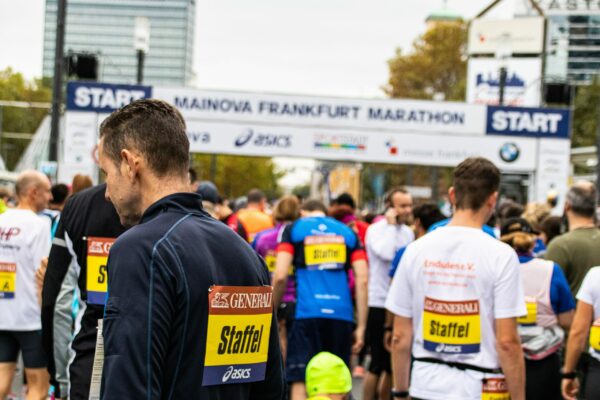
For experienced Marathon runners, the race first really starts at 30 km! Before that, you may have had the opportunity to have a nice talk with your friends, get through small crises and otherwise just run without really noticing any special obstacles.
But at 30 km, you have reached what must prove what you are made of. But you also know you have followed a personal training program, so you are ready. The exciting question now is still, what do you have left for the last 12 km!
As a marathon debutante, you have to answer the same question. For many debutantes, it will be the first time they have ever run as far as 30 km. That in itself is a good achievement. But having to decide on another 12 km can be a difficult question.
I hope you like this blog and if you have any questions about the topic or want to leave your own Personal review, please leave a comment below.
[faq-schema id=”2409″]






that is really great article! I always wants to join into marathon event but I am afraid I would never catch up with people. Anyway, do you have any reccomendation brand or site I can check for my marathon supplement? I mean, expensive and international brand always works, but I don’t wanna spend much for just like non-essential item
Hi Lana
Thank you for the comment. I don’t know an exactly brand for marathon supplements. But try to search “marathon training equipment smaller brands” in google, maybe you can find a starting point there.
Be Well
I wish that this global pandemic is over soon so I can go back and enjoy my running again. Anyways, I have been trying to get my girlfriends enjoy the feeling of running. I will use your site as references and get them moving. I love the list of items that you listed that is useful! I think i am going to take them for a run right by the Tappenzee bridge ear me. I also recently enjoy trail running as well, better for my knees 🙂
Hello there, I have never been involved in such a long distance race and even though I have seen so many that interests me I really think I am not sure about going into the competition. I really want to build my stamina and I’m with such help from.you and it’s nice for people to learn
Hi Justin
Thank you for the comment. learning something new is the path to progress and it doesn’t have to be a competition. Starting out slowly from where we are and go for a personal goal is my intention here.
Be Well
Hi Nutanee
Yes it’s often good with a list and steps to follow, particular when we start out something new. Happy that you found something useful and thank you for the comment.
Be Well